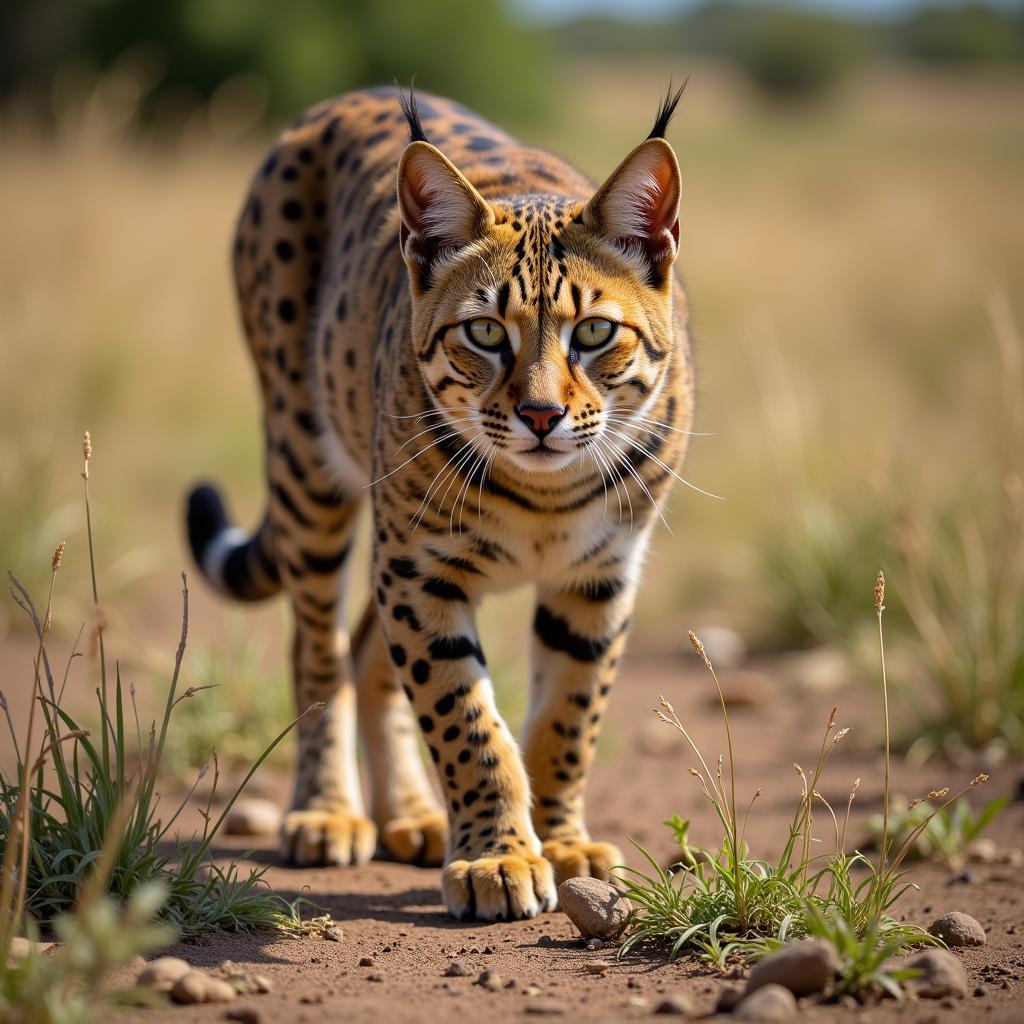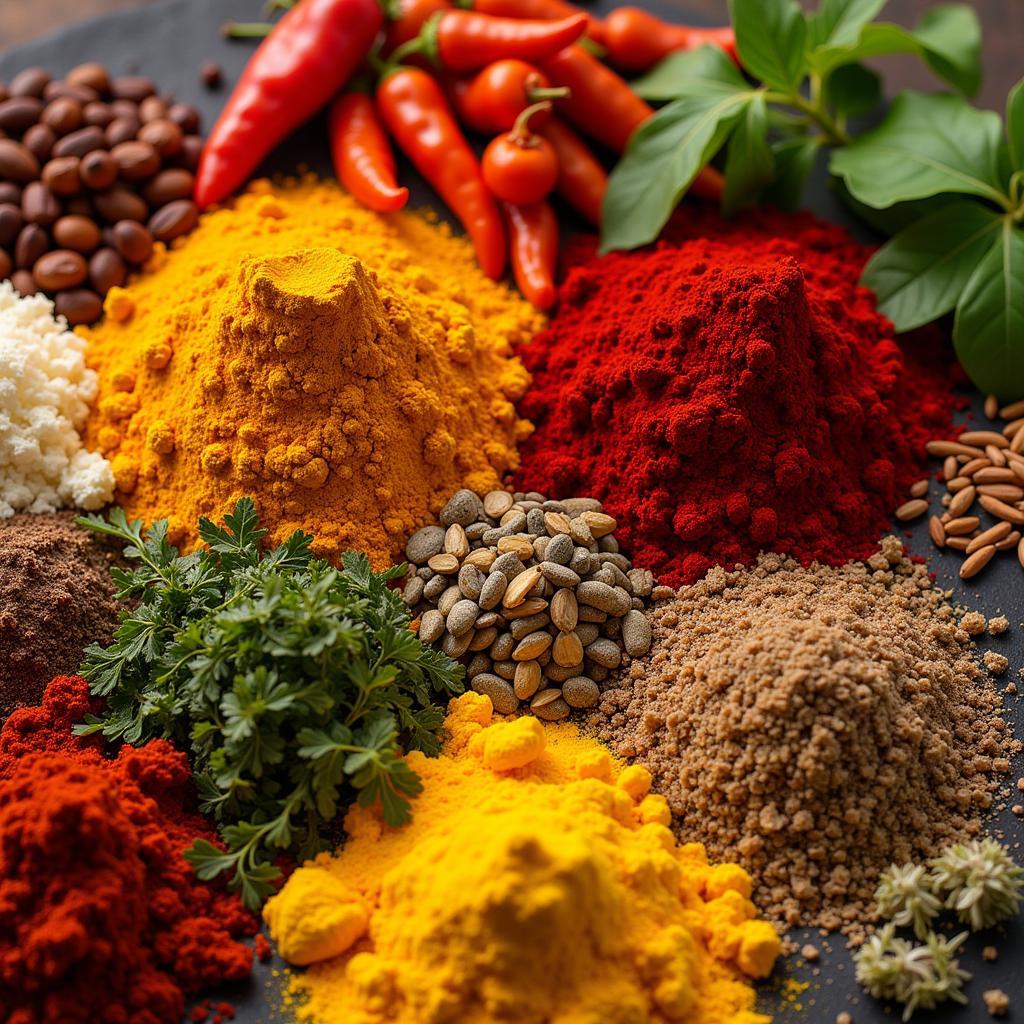The Intricate Web: Exploring the African Jungle Food Chain
The African jungle, teeming with life in its many forms, relies on a delicate balance known as the food chain. From the smallest insects to the awe-inspiring apex predators, each organism plays a crucial role in the intricate web of life. Understanding the African Jungle Food Chain provides a glimpse into the fascinating relationships that govern this vibrant ecosystem.
The Foundation: Producers and Decomposers
At the very base of the African jungle food chain are the producers. These are organisms like plants, algae, and certain bacteria that can convert sunlight into energy through photosynthesis. They form the foundation upon which all other life depends. Lush vegetation, from towering trees to vibrant flowers, thrives in the warm, humid climate, providing sustenance for a vast array of herbivores.
Equally important are the decomposers, the unseen heroes of the jungle floor. Fungi, bacteria, and invertebrates like earthworms break down dead plants and animals, returning essential nutrients to the soil. This decomposition process ensures the continuous cycling of nutrients, supporting the growth of new life.
The First Link: Herbivores
The first link in the chain consuming these producers are the herbivores. The African jungle is home to a diverse array of plant eaters, each adapted to their specific niche. From the mighty African elephant, stripping leaves from tall trees, to the tiny dik-dik, browsing on low-lying shrubs, these animals convert plant matter into energy.
Grazing animals like zebras and antelopes roam the savannas, while gorillas and monkeys forage for fruits and leaves in the dense canopy. These herbivores, in turn, become a vital food source for the carnivores higher up the food chain.
The Hunters: Carnivores and the Flow of Energy
The African jungle boasts some of the world’s most iconic predators, each playing a crucial role in regulating the populations of herbivores. Lions, with their powerful limbs and cooperative hunting strategies, often target larger prey like zebras and wildebeest. Leopards, masters of stealth, stalk their prey through dense vegetation, while cheetahs rely on bursts of incredible speed to outrun their quarry on the open savanna.
Smaller carnivores, such as servals, caracals, and African wild dogs, also play a vital role, preying on rodents, birds, and reptiles. The energy captured by the producers flows upwards through the food chain, with each level supporting the next.
Maintaining the Balance: The Importance of the Food Chain
The African jungle food chain is a delicate web of interconnected relationships. Disruptions to any part of this chain can have cascading effects throughout the entire ecosystem. For example, deforestation can lead to a decline in herbivore populations, which in turn impacts the predators that rely on them for food.
Climate change, poaching, and habitat loss all pose significant threats to the delicate balance of the African jungle food chain. Understanding these complex relationships is crucial for conservation efforts aimed at protecting the incredible biodiversity of this unique ecosystem.
Frequently Asked Questions
1. What is the role of scavengers in the African jungle food chain?
Scavengers like hyenas, vultures, and jackals play a crucial role in the ecosystem by consuming carcasses left behind by predators or those that die from natural causes. They prevent the spread of disease and help to recycle nutrients back into the environment.
2. Are there any omnivores in the African jungle?
Yes, several animals in the African jungle are omnivores, meaning they eat both plants and animals. Examples include warthogs, baboons, and some species of monkeys. They adapt their diets based on the availability of food sources.
3. How does the African jungle food chain compare to other ecosystems?
The African jungle food chain shares similarities with other ecosystems in its basic structure, with producers forming the base and energy flowing upwards through different levels of consumers. However, it is unique in its diversity of species and the specific adaptations of its inhabitants to the African climate and vegetation.
4. How can I learn more about specific animals and their roles in the food chain?
You can find a wealth of information online about African jungle animals and plants, including their dietary habits and ecological roles. Documentaries and nature programs are also excellent resources for learning about the fascinating world of the African jungle.
Discover More About the Wonders of Africa
This is just a glimpse into the intricate web of life that exists within the African jungle. Continue exploring the wonders of this fascinating continent by learning about the African buffalo, one of the “Big 5” animals, or test your knowledge with an African animals crossword clue.
Need help planning your dream African safari or seeking answers to your questions about African culture and wildlife? Don’t hesitate to contact us! Our team at “African Life” is here to assist you 24/7. Reach us via phone at +255768904061, email us at kaka.mag@gmail.com, or visit our office located at Mbarali DC Mawindi, Kangaga, Tanzania.

